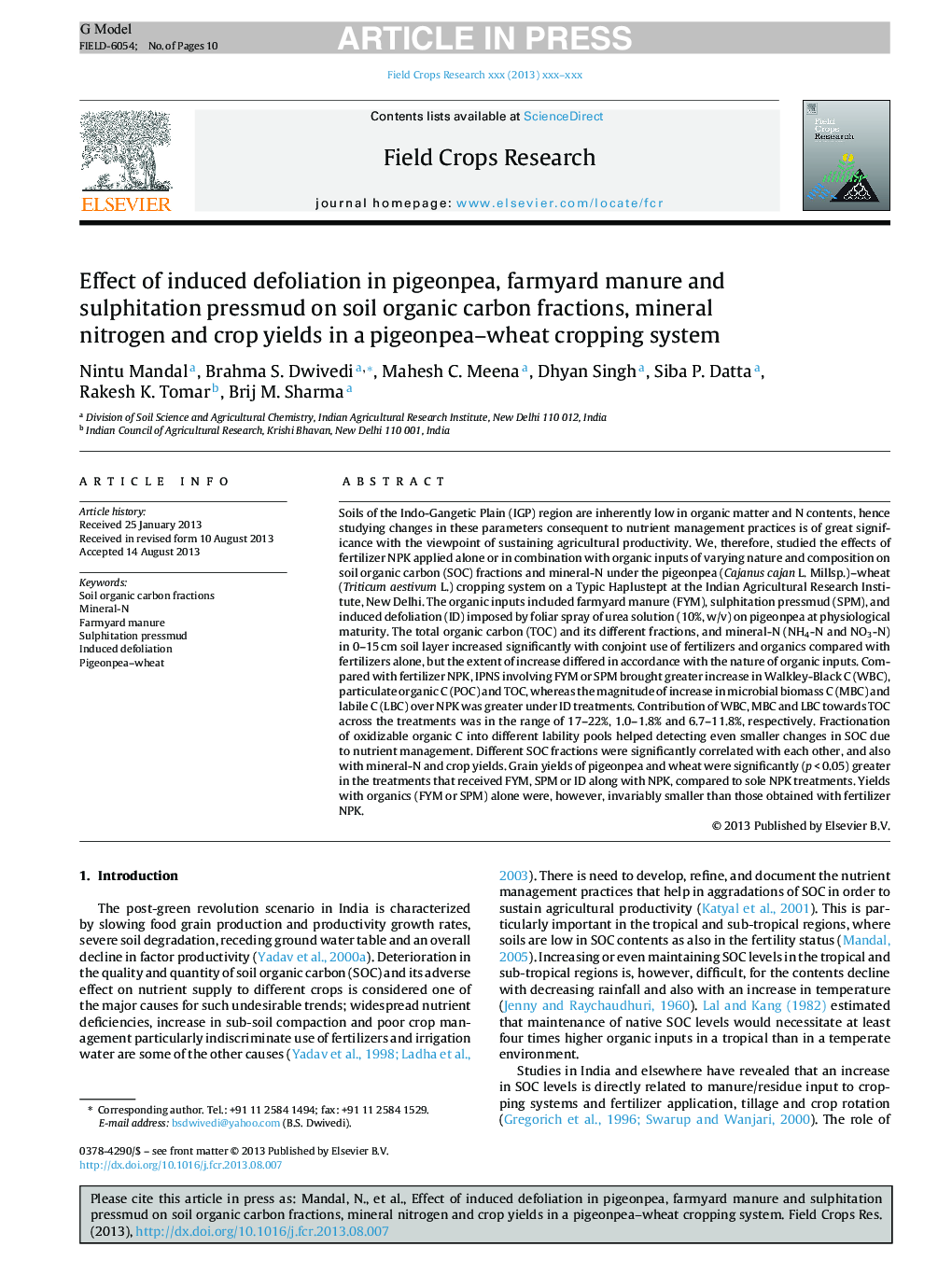| Article ID | Journal | Published Year | Pages | File Type |
|---|---|---|---|---|
| 6375177 | Field Crops Research | 2013 | 10 Pages |
Abstract
Soils of the Indo-Gangetic Plain (IGP) region are inherently low in organic matter and N contents, hence studying changes in these parameters consequent to nutrient management practices is of great significance with the viewpoint of sustaining agricultural productivity. We, therefore, studied the effects of fertilizer NPK applied alone or in combination with organic inputs of varying nature and composition on soil organic carbon (SOC) fractions and mineral-N under the pigeonpea (Cajanus cajan L. Millsp.)-wheat (Triticum aestivum L.) cropping system on a Typic Haplustept at the Indian Agricultural Research Institute, New Delhi. The organic inputs included farmyard manure (FYM), sulphitation pressmud (SPM), and induced defoliation (ID) imposed by foliar spray of urea solution (10%, w/v) on pigeonpea at physiological maturity. The total organic carbon (TOC) and its different fractions, and mineral-N (NH4-N and NO3-N) in 0-15 cm soil layer increased significantly with conjoint use of fertilizers and organics compared with fertilizers alone, but the extent of increase differed in accordance with the nature of organic inputs. Compared with fertilizer NPK, IPNS involving FYM or SPM brought greater increase in Walkley-Black C (WBC), particulate organic C (POC) and TOC, whereas the magnitude of increase in microbial biomass C (MBC) and labile C (LBC) over NPK was greater under ID treatments. Contribution of WBC, MBC and LBC towards TOC across the treatments was in the range of 17-22%, 1.0-1.8% and 6.7-11.8%, respectively. Fractionation of oxidizable organic C into different lability pools helped detecting even smaller changes in SOC due to nutrient management. Different SOC fractions were significantly correlated with each other, and also with mineral-N and crop yields. Grain yields of pigeonpea and wheat were significantly (p < 0.05) greater in the treatments that received FYM, SPM or ID along with NPK, compared to sole NPK treatments. Yields with organics (FYM or SPM) alone were, however, invariably smaller than those obtained with fertilizer NPK.
Related Topics
Life Sciences
Agricultural and Biological Sciences
Agronomy and Crop Science
Authors
Nintu Mandal, Brahma S. Dwivedi, Mahesh C. Meena, Dhyan Singh, Siba P. Datta, Rakesh K. Tomar, Brij M. Sharma,
